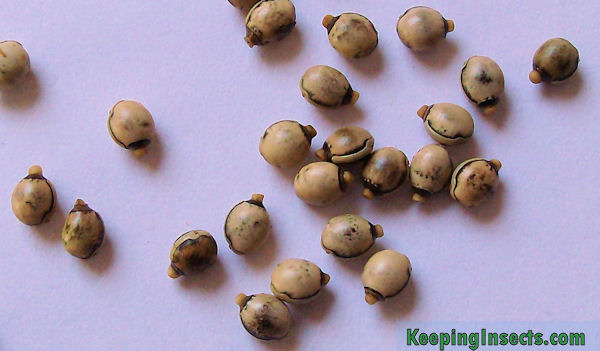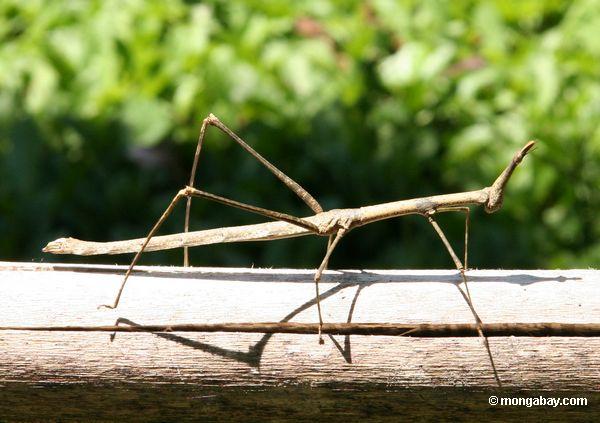
Stick bug eggs
Once hatched, the stick bugs are now nymphs where they grow by molting and they use autotomy (shedding off limbs and grow back with a new molt) to escape from predators. They already look similar to what they will as adults. Nymphs molt roughly four to eight times over a three month period before becoming an adult where they lose their ability of autotomy forever.
Stick bug nymph
In the adult stage, the males and females mate to restart the process all over again. Females are bigger than the males due to their larger abdomens used to lay eggs and males actually contain wings in order to help them find a mate. Also, in the adult stage these insects are clearly clever when it comes to disguising in their surrounding. If the camouflage of looking like a stick in a tree isn't enough to avoid predators, stick bugs have also been found to play dead while using their spiny legs as weapons and emitting bad smells. They use their camouflage to their advantage because they are prey to many tree-living animals such as birds and rodents, but even they have a hard time finding these masters of disguise in the insect world.

Adult Stick bug
Information found from:
http://a-z-animals.com/animals/stick-insect/
http://animals.pawnation.com/life-cycle-walking-stick-bug-6523.html
Images found from:
http://www.keepinginsects.com/stick-insect/breeding/
http://mplonsky.deviantart.com/art/Baby-Stick-Bug-203347184
http://www.westfield.ma.edu/personalpages/draker/edcom/final/webprojects/sp09/bugslife/SlimQuestion.html
No comments:
Post a Comment